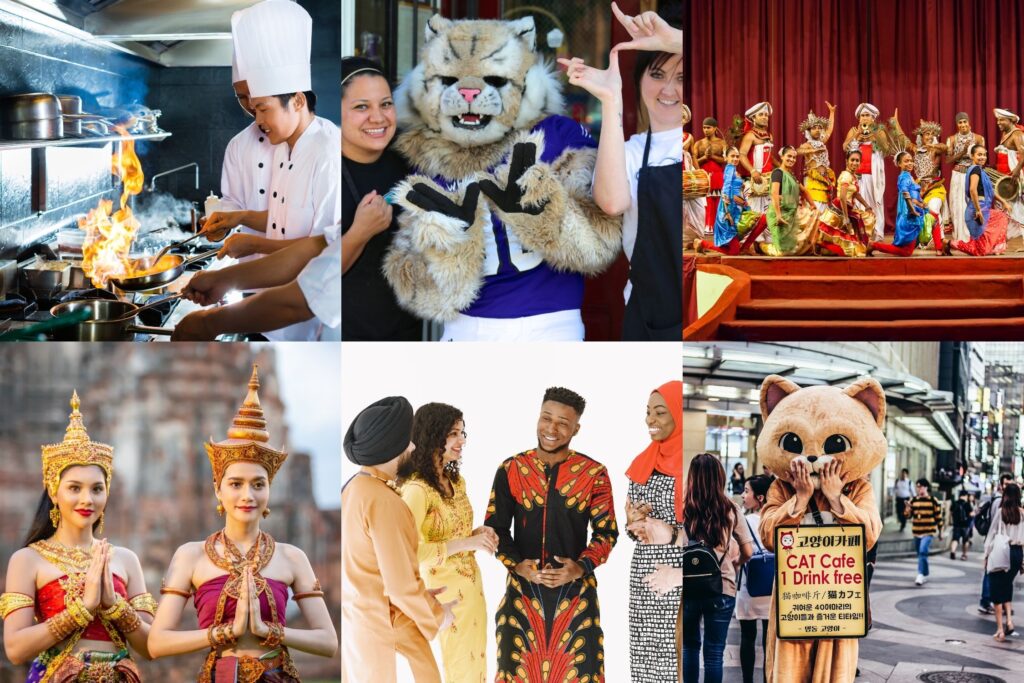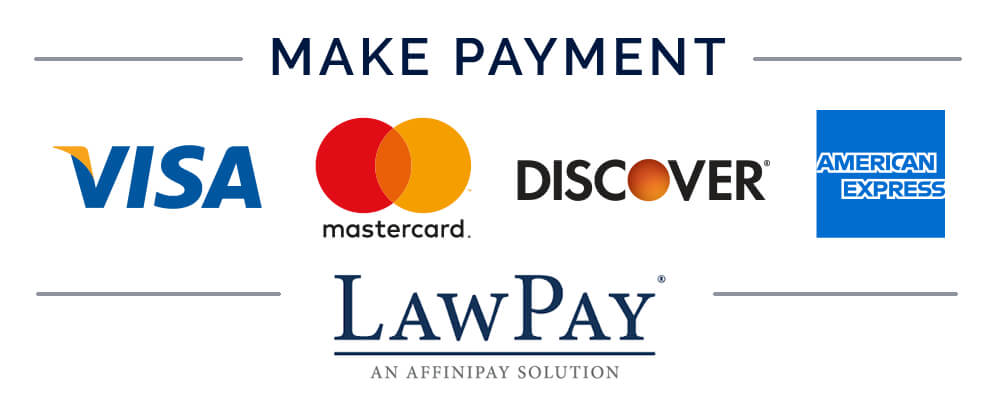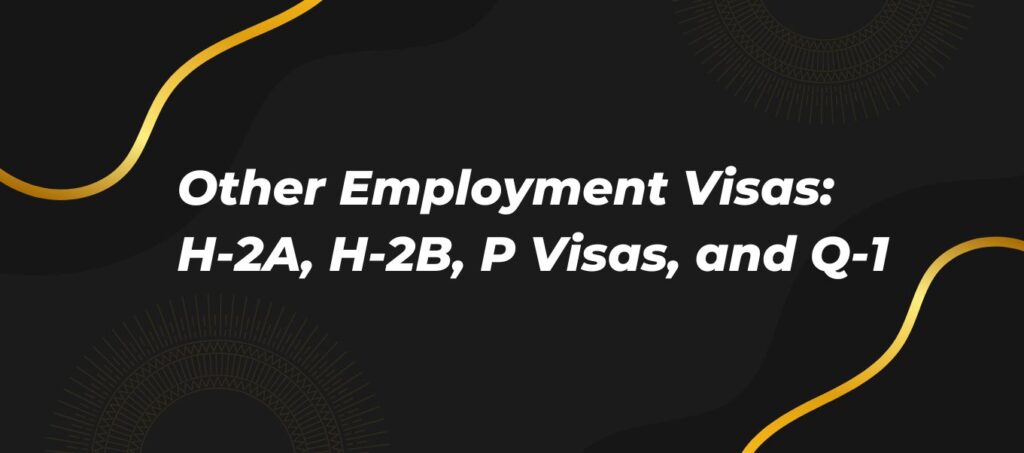Not every international worker fits neatly into the high-skill H-1B or managerial L-1 categories. The U.S. offers a range of other employment-based visas to meet diverse labor, cultural, and entertainment needs. Whether you’re a seasonal farmworker, a circus performer, or someone helping promote cultural understanding, there’s a visa tailored to your contribution. Here’s a closer look at four of the lesser-known—but essential—U.S. work visas.

H-2A Visa: For Agricultural Workers
The H-2A visa is specifically for foreign nationals who want to work in the U.S. in temporary or seasonal agricultural roles. Think of harvesting crops, planting vegetables, or working on large-scale farms and ranches. It’s most common in states like California, Florida, and Texas, where agricultural demand is high during specific seasons.
To qualify, you need a U.S. employer who can prove that there aren’t enough American workers to fill the role. The employer must also show that hiring you won’t adversely affect wages and working conditions for U.S. workers. If approved, the visa allows you to stay in the U.S. for the duration of the agricultural season—typically up to 10 months—with extensions possible in limited cases.
Workers under this visa are often guaranteed housing, meals, and fair wages under Department of Labor standards. However, it’s a physically demanding job, and working conditions can vary widely depending on the employer. It’s most popular among workers from Mexico, Honduras, and Guatemala.

H-2B Visa: For Non-Agricultural Seasonal Work
The H-2B visa is for temporary non-agricultural jobs in industries like hospitality, landscaping, construction, amusement parks, and cleaning services. It’s ideal for businesses that experience peak workloads during specific seasons—such as summer resorts needing extra staff, ski lodges hiring winter crews, or construction firms needing help during the warm months.
Just like the H-2A, employers must first get a temporary labor certification and prove that there are not enough U.S. workers who are able, willing, or qualified to do the work. Once approved, the foreign worker can come to the U.S. for a stay of up to 10 months, sometimes renewable up to three years in total.
The H-2B program is capped at 66,000 visas per year, split between the first and second halves of the fiscal year. Due to its popularity, these spots fill up quickly, so timing is everything. Workers on H-2B visas often return year after year under repeat contracts with trusted employers.

P Visas: For Artists, Athletes, and Entertainers
If you’re a world-class musician, an Olympic-level athlete, or part of an internationally recognized entertainment group, the P visa might be your gateway to performing or competing in the United States.
P visas are broken down into several subcategories:
- P-1: For internationally recognized athletes and entertainment groups. This includes everything from pro sports teams to dance troupes, circus performers, and musical acts.
- P-2: For performers or groups coming to the U.S. under a reciprocal exchange program. For example, a French musician touring in the U.S. while an American act tours France.
- P-3: For artists and entertainers who bring culturally unique performances to the U.S.—like indigenous dances, traditional folk music, or foreign theatre styles.
Applicants must have a U.S. sponsor (usually an agent, tour organizer, or employer) and provide evidence of achievements, awards, or international acclaim. Visas are generally granted for the length of the event, tour, or season—often with room for extensions.
P visa holders can bring essential support personnel with them (coaches, managers, trainers), and family members can apply for P-4 visas to accompany them.

Q-1 Visa: Cultural Exchange Workers
If you’re passionate about sharing your country’s traditions, language, or cuisine—and want to learn more about American culture in the process—the Q-1 visa is a great fit. Often described as the “cultural exchange” visa, the Q-1 allows individuals to take part in practical training and employment in the U.S. while simultaneously sharing the unique aspects of their home country.
This visa is most famously used by large cultural theme parks like EPCOT at Walt Disney World, where staff from around the world present performances, food, and crafts from their respective countries.
To qualify, you must be at least 18 years old and have the ability to communicate effectively about the cultural traditions of your home country. The sponsoring organization must offer a structured program combining employment with cultural exchange. The Q-1 is valid for up to 15 months, and after your stay, you must leave the U.S. for at least one year before reapplying.
Unlike other employment visas, the Q-1 doesn’t lead to a green card, and dependents are not eligible for derivative visas. Still, it offers a rare and rewarding opportunity for cultural ambassadorship and international understanding.

Real Stories: From Job Offer to Visa Approval
Every visa represents more than paperwork—it’s a person’s future. Take the story of Raj, a young chef from India who dreamed of showcasing regional Indian cuisine in the U.S. Through a cultural exchange partnership with a U.S. resort, he applied for a Q-1 visa. His culinary demonstrations became a hit, helping guests experience not just Indian food but the rich stories behind each dish. The visa not only helped him grow professionally—it left a lasting impression on everyone he met.
Or consider Maria, a seasonal worker from Mexico who returns to a Florida strawberry farm each year on an H-2A visa. She’s built a reputation for her dedication and skill, and her seasonal work helps fund her children’s education back home. Over the years, she’s become part of the local farming community, celebrated by her employer and appreciated by the workers she trains.
Then there’s Kwame, a Ghanaian percussionist who toured the U.S. with a P-3 visa, introducing schools and audiences to traditional West African drumming. His performances weren’t just entertainment—they were cultural education, bridging worlds through rhythm and storytelling.
Final Thoughts
If you don’t qualify for an H-1B, L-1, or O-1, these other employment visas could be exactly what you need. Whether you’re planting crops, hosting concerts, or showcasing your culture, there’s a path to the U.S. designed for your skills and passions.
Each of these visa types—H-2A, H-2B, P, and Q—requires thoughtful preparation, strong documentation, and a qualified U.S. sponsor. They’re temporary, yes—but they open doors to life-changing experiences and connections that span countries and cultures.
Have questions about which employment visa suits your situation best? We’re here to help you navigate the options, gather the right paperwork, and take the next step toward your American journey.



